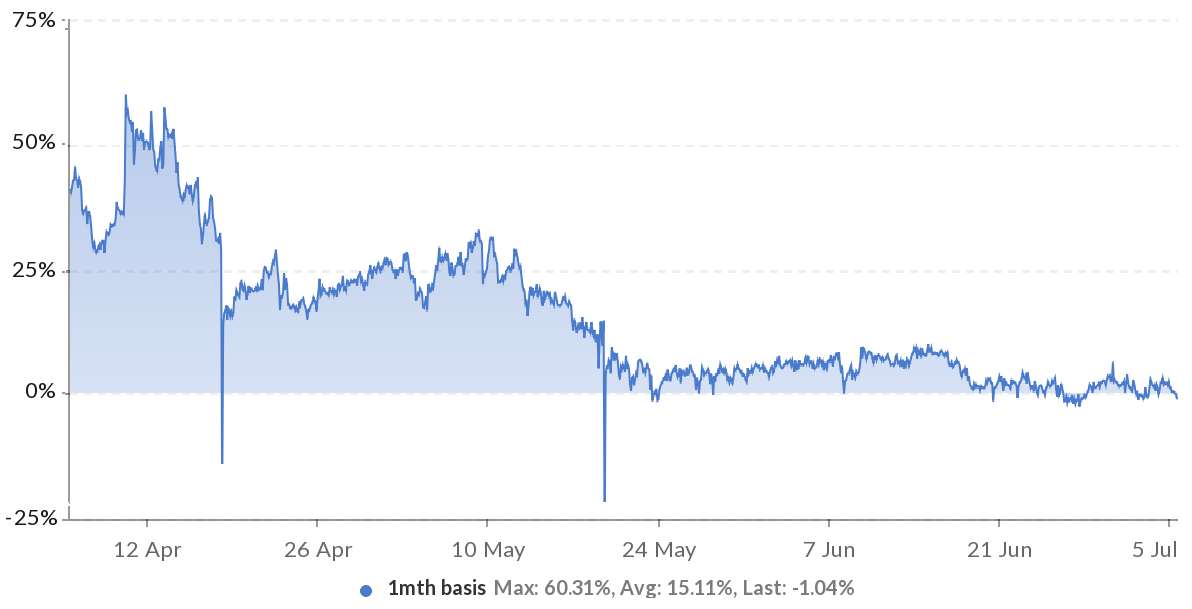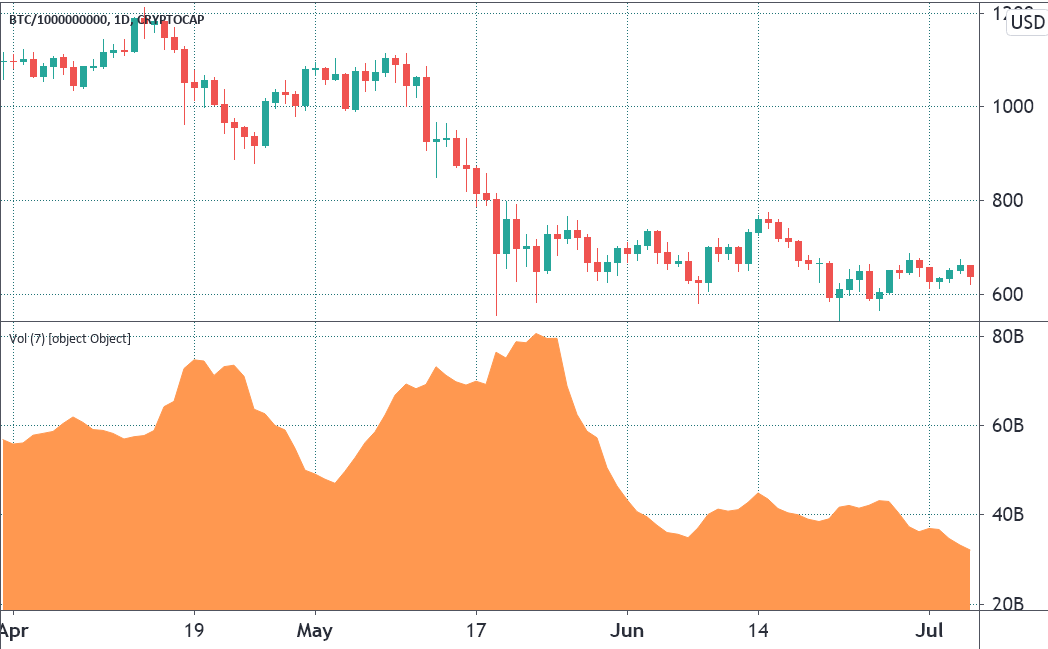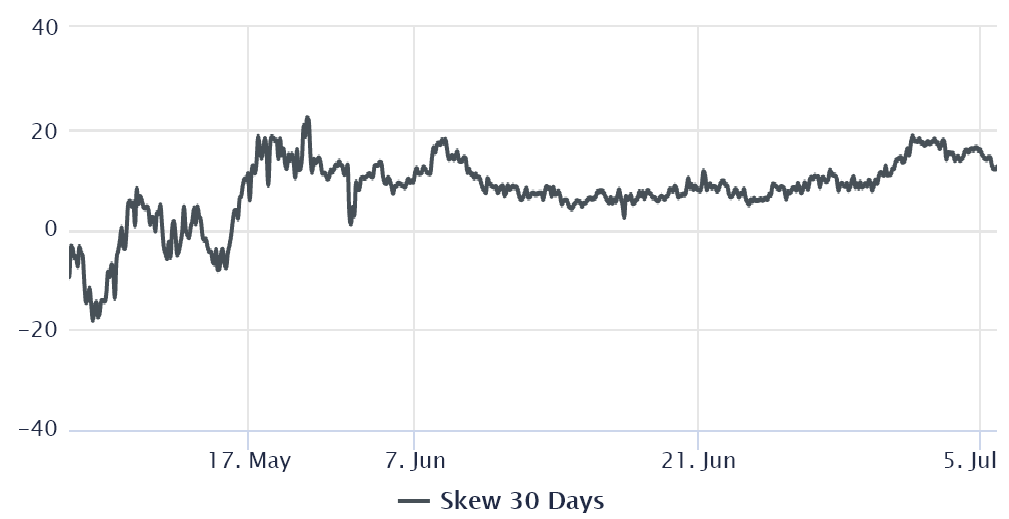
Bitcoin (BTC) might have tested the $40,000 support in mid-July, but according to various derivatives metrics, there has not been a significant change in investor optimism.
This situation either means that price is not what they are looking to mark the end of the current bear market, or that most traders are still underwater at $40,000.
One of the best measures of optimism is the futures market premium, which measures the gap between longer-term contracts and the current spot market levels. In healthy markets, a 5% to 15% annualized premium is expected. However, during bearish markets this indicator fades or turns negative, a situation known as backwardation, and an alarming red flag.

According to the chart above, the 1-month futures contract has been unable to sustain an annualized premium above 5% since June 18. There have even been some periods of backwardation, including the most recent one on July 5.
There is, of course, the possibility that derivatives markets could decouple from regular spot markets. Maybe investors are unwilling to take the exchange risk, as futures contracts require margin deposits.
Could spot and derivatives markets diverge?
To understand whether the bearish signals seen in derivatives are explicitly tied to these instruments, one should analyze spot market volumes. Typically, bearish markets will present lower trading activity a couple of weeks after the price crash.

As predicted, the traded volume peaked in late May but more than halved a couple of weeks later. Although this cannot be deemed a bearish indicator by itself, it expresses a lack of interest in trading at the current levels.
This movement might happen when buyers are scared and, as a result, place scaling bids below market levels, or when sellers have been exhausted. Unfortunately, there's no way to know until a decent amount of volume trades outside of the $650 billion market capitalization area.
Options markets can assist in confirming bearish sentiment
However, there's another way to gauge professional traders' optimism. The 25% delta skew compares similar call (buy) and put (sell) options. When fear is prevalent, the metric will turn positive as the protective put options premium is higher than similar risk call options.
The opposite holds when market makers are bullish, causing the 25% delta skew indicator to shift to the negative area.

A 25% delta skew ranging from negative 10% to positive 10% is usually deemed neutral. However, the indicator has been above such a range since June 30, indicating fear from arbitrage desks and market markets.
The last time this indicator showed a bullish sentiment was on April 14, the exact day of the $64,900 all-time high.
Considering that none of the derivatives indicators showed signs of bullishness even as Bitcoin price held above $40,000 on June 15, there is reason to believe that investors are not comfortable opening long positions right now. It remains unknown what will trigger a sentiment change, but it will certainly take more than a single 10% rally.
author and do not necessarily reflect the views of Cointelegraph. Every investment and trading move involves risk. You should conduct your own research when making a decision.
Title: Backwardation in Bitcoin futures contracts shows pro investors lack confidence
Sourced From: cointelegraph.com/news/backwardation-in-bitcoin-futures-contracts-shows-pro-investors-lack-confidence
Published Date: Tue, 06 Jul 2021 17:37:02 +0100
Did you miss our previous article...
https://trendinginthenews.com/crypto-currency/striking-a-chord-defis-domino-effect-on-nfts-and-web-30-adoption






